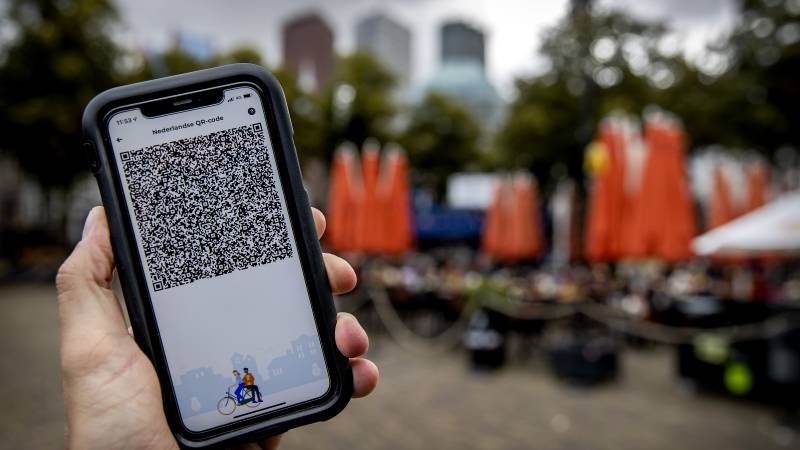The picture shows that especially unvaccinated people infect each other. The underlying figures come from July and August, when the delta variant was already dominant. RIVM looked at people who tested positive at the GGD and this shows that if the source is vaccinated, there is hardly any transmission.
There is no extensive research as for the alpha variant, but according to RIVM modeller Jacco Wallinga, the graphs for the alpha variant and the delta variant give the same picture: “The rough picture is that vaccination still protects well against transmission. Perhaps slightly less with the delta variant. .”
Wallinga points out that the data does not have to be representative of all transmission of the virus, because not everyone with an infection gets tested and knows who the infected person was.
Wrong result
Vaccinated people in the pub will therefore present only a small risk of transmission, but what about the unvaccinated who had to be tested beforehand? There is still a chance of transmission in the people tested. For the quick test, you can get an incorrect result.
The OMT even writes in the latest advice: “Calculations show that the chance that someone carries an infectious virus […], even after a negative rapid antigen test, is still about twice the chance that a fully vaccinated person will carry the virus.”
That is a calculation by the researchers at Fieldlabs, says OMT member and virologist Marion Koopmans. “The question is whether the difference is still that big, with the delta variant. But we do know that it is not fool proof is.”
Koopmans thinks that the risk that someone is contagious is about the same for tested and vaccinated people. “It’s hard to quantify, but it’s about risk reduction.” She illustrates it using the cheese hole model. “Each measure is a slice and has holes. But the combination of measures reduces the chance that an infectious person will slip in. That starts with staying home in case of complaints or after a risk contact, then comes the corona pass.”
One and a half meters more effective
Keeping a distance of one and a half meters is more effective, says Koopmans, “but we wanted to get rid of that. So we now have to take into account more circulation, even if it is difficult to estimate how much.”
If the corona pass is not introduced, the Netherlands will be at greater risk, epidemiologist Frits Rosendaal thinks. “It’s a means of slowing down the epidemic.” With 20 percent of the population not yet vaccinated and a proportion where the vaccine simply doesn’t work, hospitals could still be overloaded.
And, Rosendaal emphasizes, the pass mainly protects the unvaccinated. “That now seems to be forgotten, but being able to pass it on to vaccinated people is not so bad if they are only let in. A negative test only protects others, being vaccinated also protects yourself.”
“What we are actually doing with the corona pass is to protect the vulnerable and care, to give the vaccination rate a boost and to let the epidemic circulate gradually. I expect that we will continue to need it until the winter.”
It remains to be seen to what extent it will really slow down the epidemic. In addition to the pitfalls described above, the implementation in practice is crucial. If there are no checks, there fraud is committed Using QR codes or vaccinated people with complaints going to the pub anyway, the effectiveness decreases.
Vaccination urge
In other European countries such as Italy and France, the corona pass has been mandatory for some time, and the vaccination rate there rose significantly after its introduction. So is it primarily a means of boosting vaccination coverage? As far as Koopmans is concerned, not: “If the urge to vaccinate is the goal, then you run the risk that polarization will increase, instead of people being vaccinated. Vaccination is really very important, but those tests must remain free so that there is still another option. And testing isn’t fun, but it’s not the end of the world either.”
–


